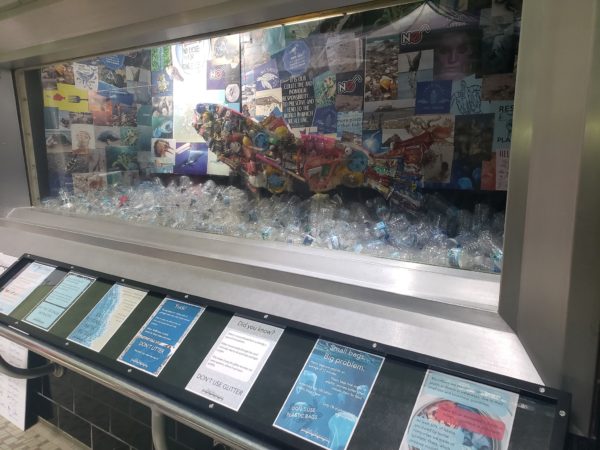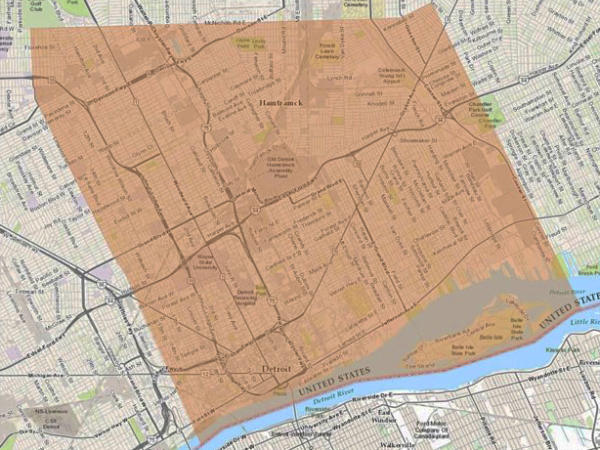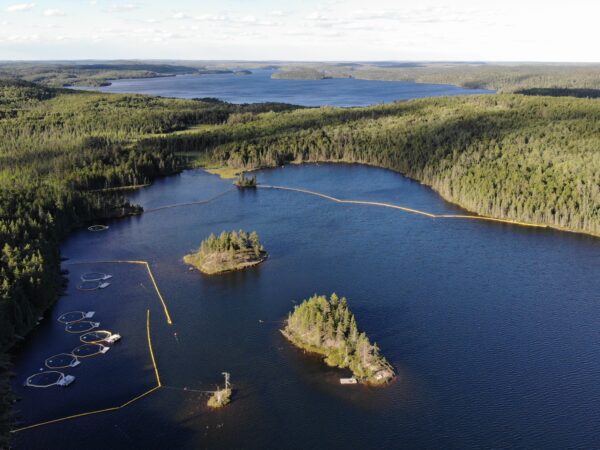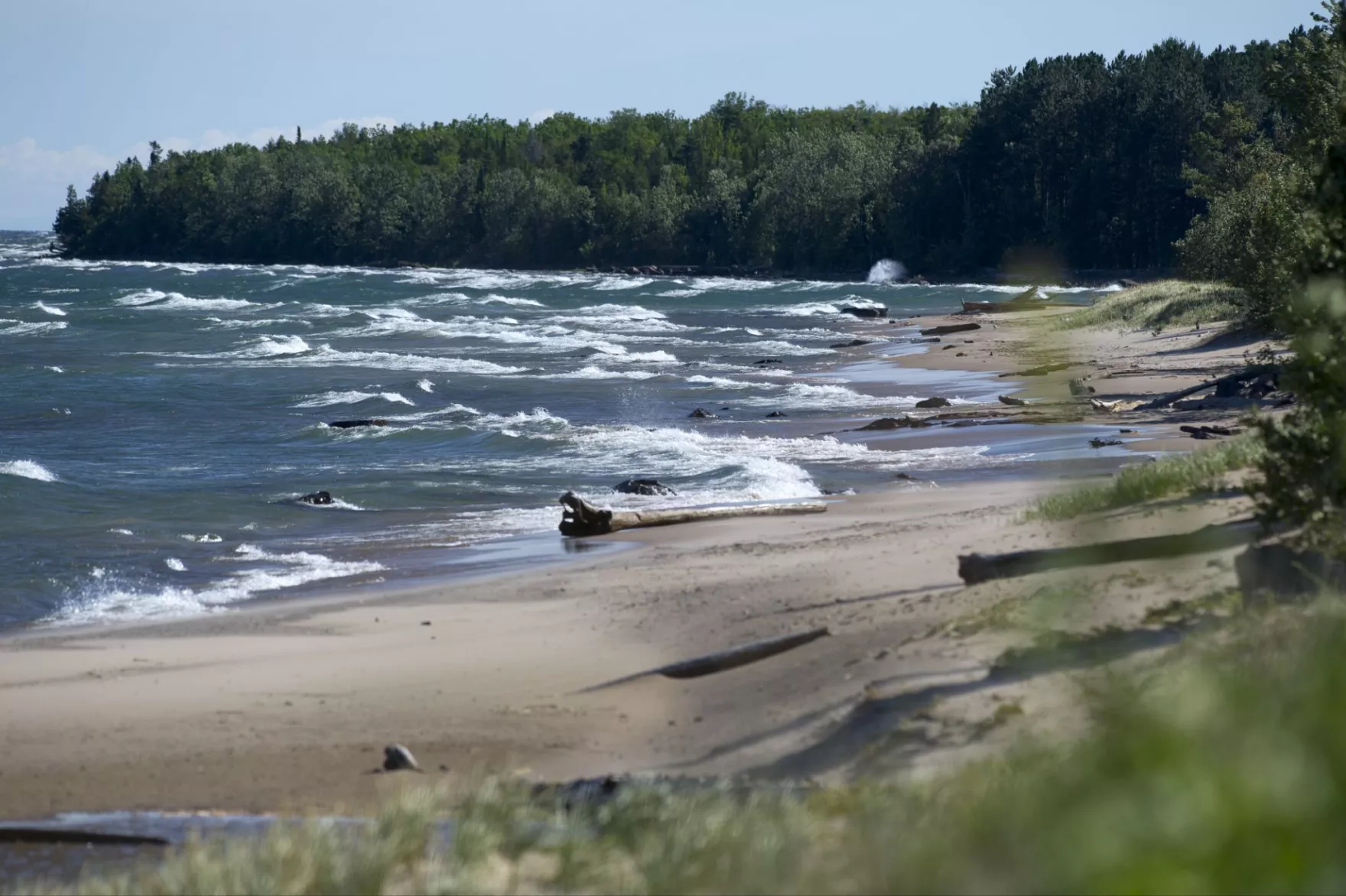
By Ellie Katz, Interlochen Public Radio
Points North is a biweekly podcast about the land, water and inhabitants of the Great Lakes.
This episode was shared here with permission from Interlochen Public Radio.
Michigan’s western Upper Peninsula has long been a mining region. But when the final iron and copper mines closed in the late 20th century, people started leaving – and they never really had a reason to come back.
But now, copper mining is seeing a revival, partly because it’s one of the most important metals for renewable energy. The clean energy transition can’t happen without it. And the U.P. – it’s got a lot of copper.
But there’s something else the U.P. has too: some of the region’s most treasured natural spaces and some of the Great Lakes’ cleanest water.
So, when news broke of a new copper mine being built near the shores of Lake Superior, Porcupine Mountains Wilderness State Park and the North Country Trail – the reactions were passionate – both for and against it.
Could it resurrect a struggling rural economy, or will it destroy what makes the region so special?
Credits:
Producer: Ellie Katz
Host: Dan Wanschura
Editor: Morgan Springer
Additional Editing: Ed Ronco, Izzy Ross, Dan Wanschura
Music: Arequipe, Shelftop Speech, Valantis, Calisson, Curiously and Curiously, Telltale (30 sec), Valantis Vespers (30 sec), Titter Snowbird and Arctic Draba
Sound: Train Sounds by xserra via Freesound, Heavy Machinery Sounds by ProtectThePorkies, The Misconceptions of the Copperwood Project by 6ix and March 26, 2024 MSF Board Meeting Recording by Michigan Economic Development Corporation
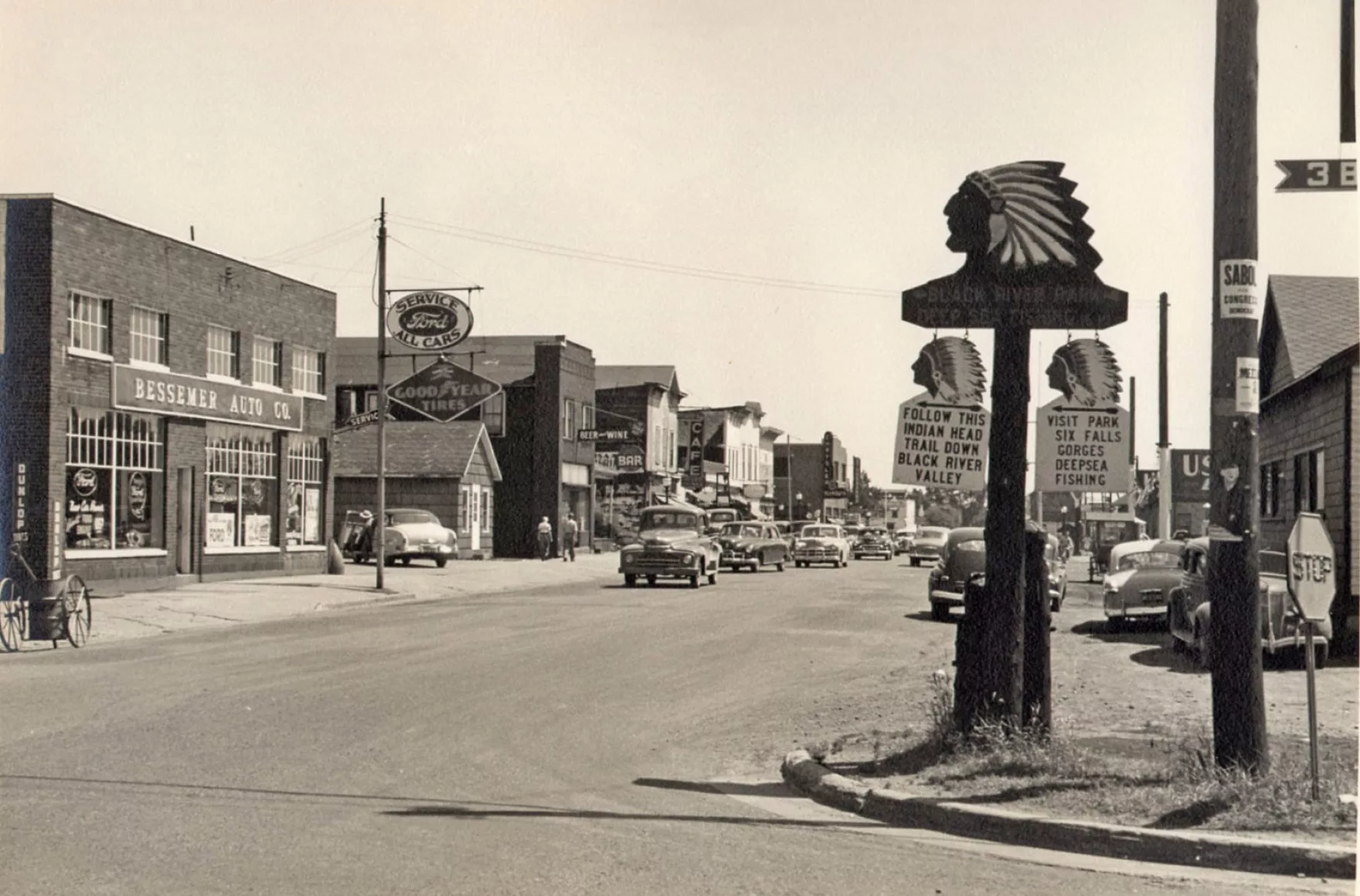
Lead Street in Bessemer, Michigan in 1951. Joe Bonovetz was born in Bessemer, a town in the western Upper Peninsula, in 1950. “If you drive through Bessemer [today], you’ll see all these storage sheds … where there was a movie [theater], and a grocery store, the gamble store, Dewey’s,” Bonovetz said. “But, you know, they all got torn down over the years.” Bessemer is on the Gogebic Iron Range, and iron mining brought settlers to the region. (Credit: Bessemer Area Historical Society)
DAN WANSCHURA, HOST: Bessemer is a small town. It’s surrounded by rolling green hills and rivers that tumble towards Lake Superior. And the county it’s in, Gogebic County, is as far west as you can get and still be in Michigan. It’s in the Upper Peninsula. This is where Joe Bonovetz grew up. In the 1950s and 60s, he’d ride his bike, fish and run around with friends.
JOE BONOVETZ: I think the scariest stuff we ever did is we used to play tree tag.
WANSCHURA: There was this nearby grove of young pine trees about 20 feet tall. And whoever was “it” would close their eyes.
BONOVETZ: And the rest of us would run into the little forest there – the trees – and then climb up ‘em and get to the top. And they were spindly. … They would come to get us, start climbing up, and we’d start going and grab the branch on the other tree, and then we’d jump to the next tree and then jump to the next tree. And, uh–
ELLIE KATZ: Are you serious?
BONOVETZ: Yeah, we called it tree tag.
WANSCHURA: (That’s reporter Ellie Katz you just heard.) Bessemer was small even back then – but lively.
BONOVETZ: We had stores and buildings all the way up and down our main street. They were all occupied, all kinds of stuff going on. … You know, grocery stores, hardware stores … and dime stores, gamble stores, restaurants: The Tip Top, Dandy Bakery, Dewey’s.
WANSCHURA: Gogebic County was iron country. It was right on the edge of copper country, too. Mining kept the region ticking. Joe and his friends would hang out near the railroad tracks.
BONOVETZ: Cars would come over with all this iron ore. You know, 70-80 cars. *mimics the sound of railcars on tracks*
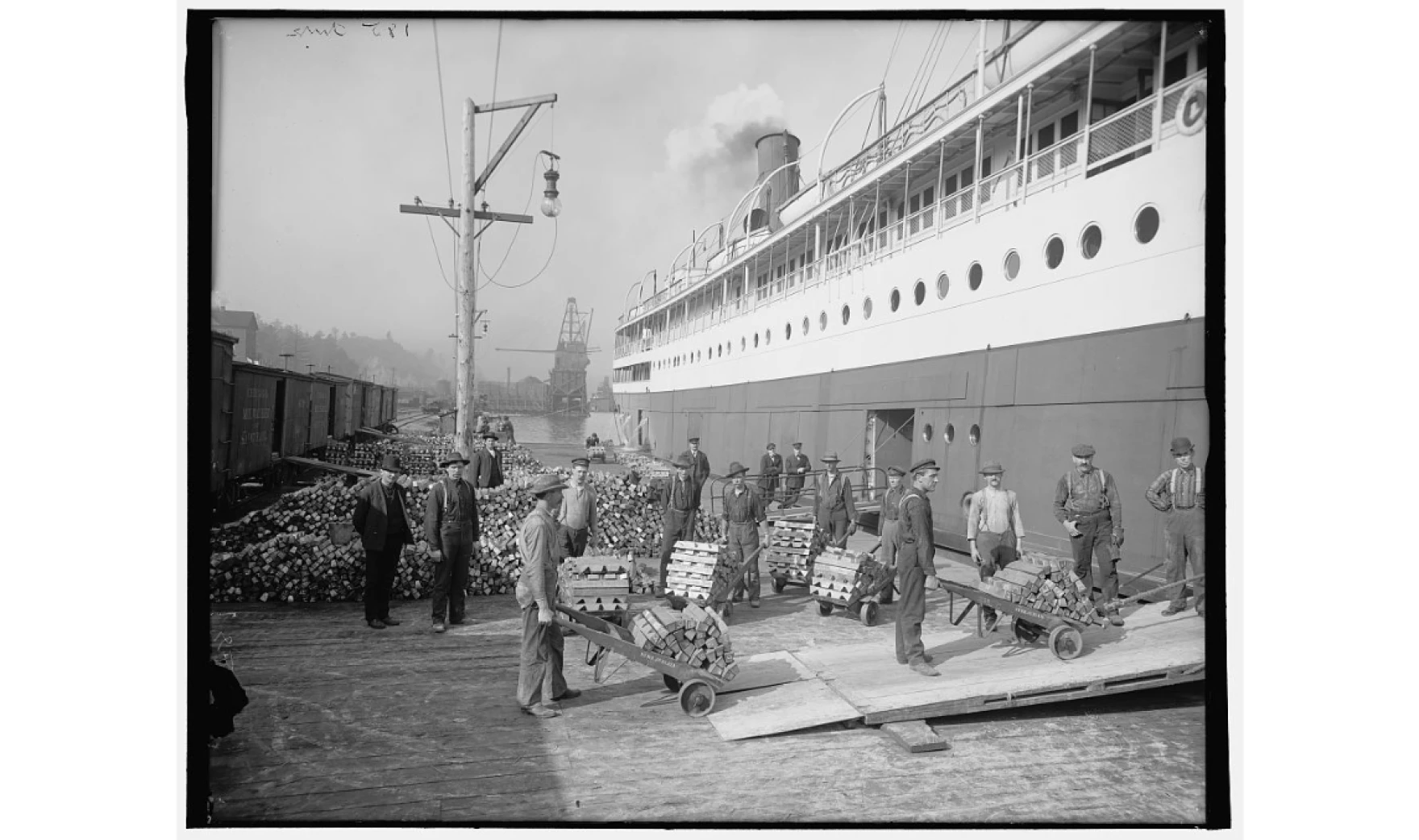
Men load copper onto a steamer in Houghton, Michigan in the early 1900s. Michigan’s Keweenaw Peninsula was the heart of Copper Country. The region’s “native copper” – copper which occurred in a nearly pure form – brought waves of European settlers to the U.P. to mine on an industrial scale. But indigenous people in the Lake Superior basin had been mining copper for as many as 6,000 years before European settlement. (Credit: Detroit Publishing Co. / Library of Congress)
WANSCHURA: Joe became a mailman in Bessemer in 1973. By then, most of the iron mines were closing down. But Michigan’s last major copper mine, White Pine Mine, was still booming.
BONOVETZ: White Piners were, they were, you know, making good money. I was delivering mail to a lot of White Piners, you know. They’re the ones that had boats, and they had pickup trucks and, you know, they did really well.
WANSCHURA: But in the 80s, things started to change. Copper prices plummeted.
BONOVETZ: Little by little this business closed. … Then another business on the main street closed. … Eventually, the drugstore closed.
WANSCHURA: In 1995, the White Pine Mine closed too. In the following decades, two other major employers in the region – a paper mill and a prison – also closed.
But around 2013, Joe heard whispers about a mine. A new mine. He dreamed about the hundreds of good-paying jobs that could come with it — the major economic boost.
Copper mining is seeing a revival, partly because it’s one of the most important metals for renewable energy. The clean energy transition cannot happen without it. And the western Upper Peninsula — it’s got copper.
But there’s something else the western U.P. has too: some of the region’s most treasured natural spaces and some of the Great Lakes’ cleanest water.
And the closer the mine gets to operating, the fiercer this fight over it becomes.
This is Points North, a podcast about the land, water and inhabitants of the Great Lakes. I’m Dan Wanschura. Today on the show, could a mining revival save this region or destroy it? Reporter Ellie Katz picks it up right after the break.

The copper deposit Highland Copper Company plans to mine lies underground near Porcupine Mountains Wilderness State Park, Lake Superior and the North Country Trail. The mine would be underground, not an open pit. This map comes from Highland Copper’s feasibility study. Highland Copper purchased the Copperwood project from Orvana Resources in 2014, which started drilling exploration around 2008. But the deposit was originally drilled for exploration in the 1950s. (Credit: Highland Copper Company Inc.)
ELLIE KATZ, BYLINE: About a year ago, Adam Simon decided to sit down and work out kind of a wicked math problem.
ADAM SIMON: How much new copper the world needs, if everyone drives a hybrid vehicle, if everyone drives a battery electric vehicle, if all of the electricity that’s needed to charge battery electric vehicles comes from a combination of wind turbines and solar panels, and what– how much copper do we need if the whole world eliminates fossil fuels, and all of our electricity comes from wind and solar?
KATZ: Adam is a professor of earth and environmental sciences at the University of Michigan. And what he found, maybe not so surprisingly, is the amount of copper we’re currently producing is nowhere near the amount of copper we need. And there’s a lot at stake. Like, earlier this year…
SIMON: New Delhi, India hit 126 degrees. The ocean off of Miami, Florida last year hit 100 degrees. I mean, that’s the Atlantic Ocean at a temperature that we associate with hot tubs.
KATZ: Parts of our region saw record warm temperatures and record low ice cover this past winter. For Adam, the solution is pretty cut-and-dry: more copper mines.
SIMON: If we don’t mine these metals, we will not reduce our emissions, we just can’t.
(sound of stream and light wind fades in)
KATZ: It’s quiet now.
TOM GROTEWOHL: It is. Enjoy it while it lasts.
(sound of woodpecker)
KATZ: This is Tom Grotewohl. We’re standing in the woods right on the property line of the mine site. They’ve already cleared hundreds of trees to make way for operations.
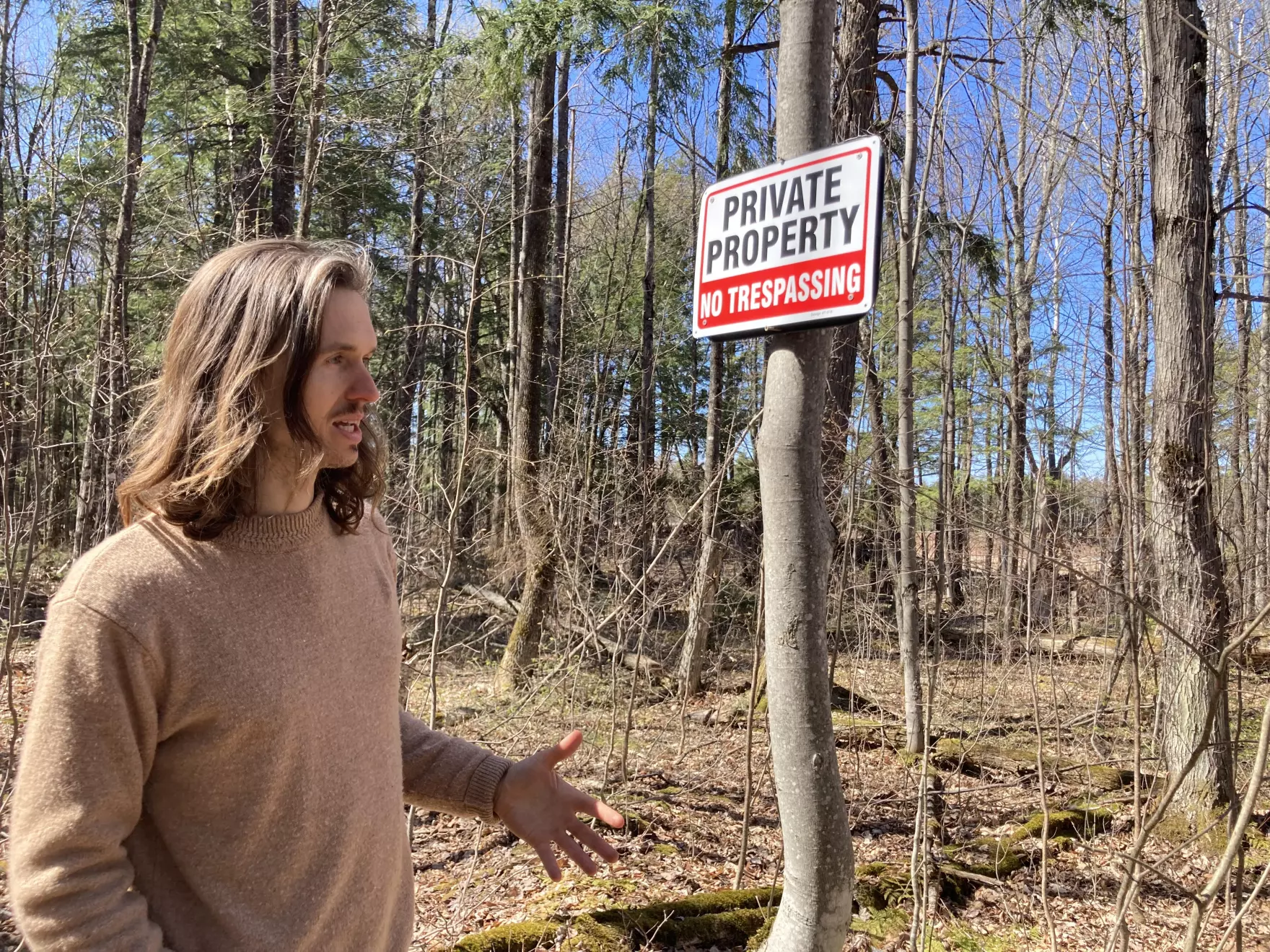
Tom Grotewohl stands in the Ottawa National Forest, right on the property line of the Copperwood Mine site. Initial site work has started, like clearing trees and rerouting a stream. But the company that owns Copperwood still needs to raise hundreds of millions of dollars before mining operations can really begin. (Credit: Ellie Katz / Points North)
GROTEWOHL: Once there’s a mine here – I don’t want to say “once” there’s mine – if there’s a mine here, you have to think about all of the processes involved. From subterranean blasting … and then the rock grinding. I mean, does rock grinding sound like a quiet activity to you? … Does that sound [like] something that’s compatible with listening to woodpeckers and streams? I mean, it’s hard to think of something more contrary to peace and quiet in nature.
KATZ: When Tom moved here a couple years ago, he didn’t know anything about the mine. He and his partner were in a congested city and wanted that peace and quiet. So they started looking at maps.
GROTEWOHL: Where can we find a night sky where you can still see the stars? Where can you find a place where you don’t have to hear traffic? Where can you find a place where there’s no exhaust on the air?
KATZ: They bought a little off-grid cabin tucked away in the woods just steps from Lake Superior and Porcupine Mountains State Park. Tom says it immediately felt like they were living their dream. Until one day when he was at work at the state park.
GROTEWOHL: I was working in the little booth right down the road here selling you your ticket, giving you trail advice, cleaning the bathroom. And this kind of eccentric guy rolled through and said, “Where’s Copperwood? Where’s the Copperwood Mine?” And I said, “What are you talking about, sir?”
KATZ: It was the first time Tom heard the name Copperwood. The man was an activist opposed to the mine. And he was the first person to give Tom some information on Copperwood. Soon after, Tom started to notice changes like a mine access road.
GROTEWOHL: I started seeing heavy machinery coming in and out of that drive. And then when I was walking on the North Country Trail one day, I heard the ruckus of heavy machinery.
(sound of heavy machinery in woods)
GROTEWOHL: And then I saw that there were actually quite a lot of machines there that were clear-cutting the forest. And this was a place where people had told me it was all just talk, nothing was actually happening.
(sound of heavy machinery in woods fades out)
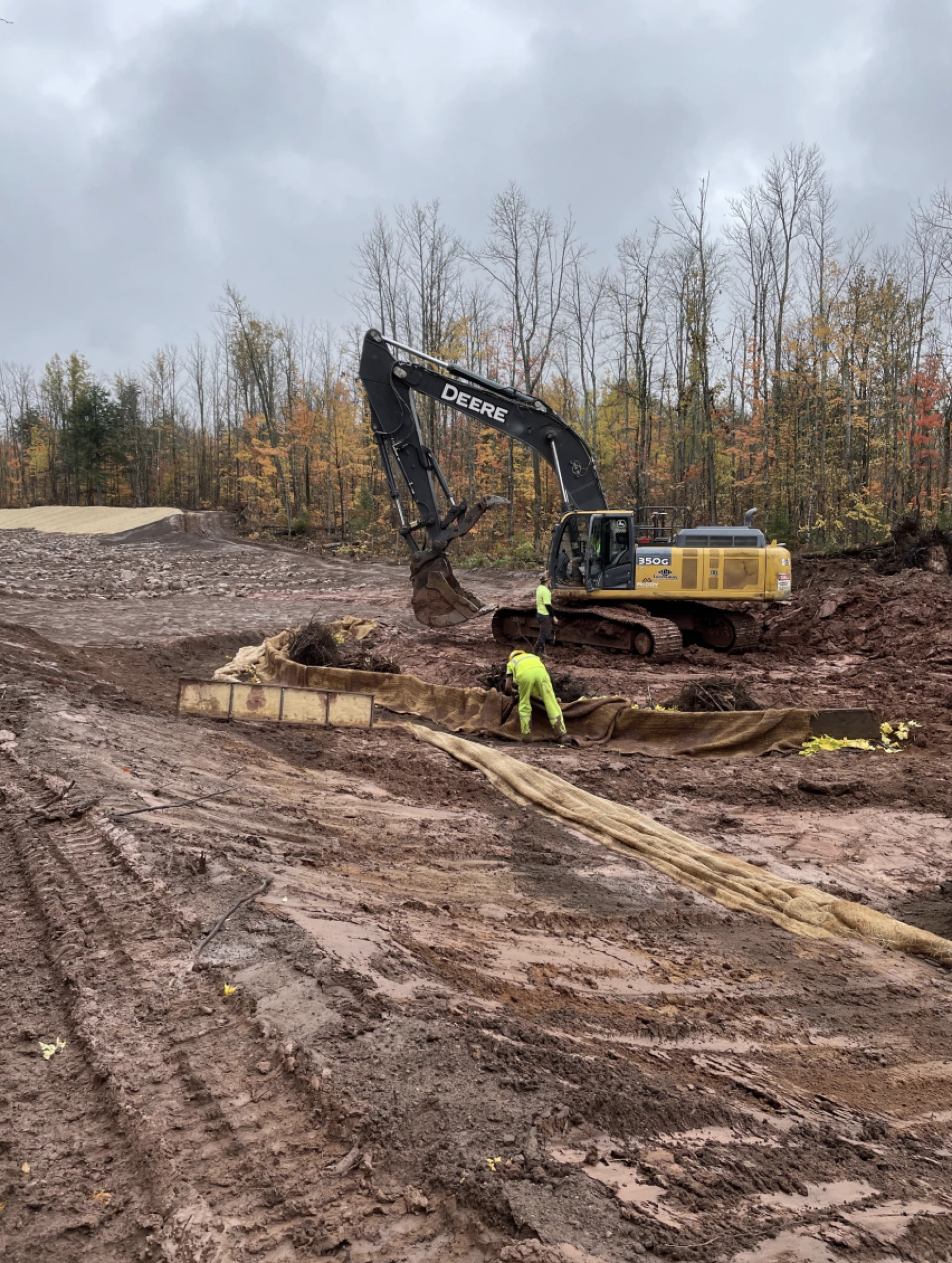
Site work like rerouting a stream and clearing trees for the tailings dam facility began in 2023. Before mining begins, the state of Michigan requires financial assurance from mining companies to cover and reclaim the site once operations have ceased. Melanie Humphrey, with the Department of Environment, Great Lakes, and Energy, says monitoring continues for at least 20 years after a mine’s closure under Michigan law. (Credit: Michigan Department of Environment, Great Lakes, and Energy)
KATZ: But something was happening: the very early phases of a copper mine. Just a few miles from his house, from Lake Superior and from the Porcupine Mountains. For Tom, the risk of this mine is just not worth it.
GROTEWOHL: You know, they call it a copper mine. But that’s really false advertising because if copper is only 1.45% of what comes out of the ground, and 98.55% is waste, it’s a lot more accurate to call it a waste mine.
KATZ: Right now, copper mining produces more waste in the United States than any other metal. That’s according to the Environmental Protection Agency. Globally, mines generate billions of tons of waste each year called tailings. This sludgy-slurry mixture is a byproduct of the mining process.
KAREN HUDSON-EDWARDS: The bottom line is that most mineral deposits will have all kinds of elements, some of which are [interesting to] people for economic reasons. But the other ones, you have to kind of take out anyway because you have to get out what you’re interested in.
KATZ: That’s Karen Hudson-Edwards. She’s a professor at the University of Exeter in England. She researches the environmental impacts of mining.
HUDSON-EDWARDS: There are often suites of other elements that are potentially very toxic. So things like arsenic, and lead, and cadmium that have been in the past– well, they still are called “heavy metals,” although that term is fading away. We talk about those because there are known health effects to humans. So we know of lead poisoning, arsenic is a very powerful toxin to humans. So that’s the problem with many tailings.
KATZ: Those get stored in what’s called a tailings dam. Karen says these dams are some of the largest manmade structures on earth. And she also says, for the most part, these dams do what they’re meant to. They prevent these toxic wastes from getting into water or air at amounts dangerous to human health. But the dams can leach. And they can fail.
HUDSON-EDWARDS: So there have been big accidents where, you know, because the tailings are sort of a slurry, as you said, if the dam wall fails, it rushes out. And it can cause a lot of damage. It causes death to humans and ecosystems. You get these horrible pictures where you know, these blankets of tailings are just covering river systems for many, many, many, many kilometers.
KATZ: In 2015, a dam collapse at an iron ore mine in Brazil caused one of the worst environmental disasters in the country’s history. And in 2019, another dam collapsed in Brumadinho, Brazil. It killed more than 200 people. Some studies say the likelihood of tailings dam failures across the world is increasing.
Copperwood’s tailings dam will cover more than 300 acres. That’s an area about the size of Epcot at Disney World. And it’ll be built on land sloping towards Lake Superior, which is less than two miles away. But Karen says the Brumadhino disaster in 2019 shook up the mining industry.
HUDSON-EDWARDS: I would say, building a mine with a tailings dam in 2025, your safety is going to be orders of magnitude different than before Brumadhino.
KATZ: Investors demanded change and out of it came the first global tailings standard: an international standard created with the United Nations.
HUDSON-EDWARDS: Although the global industry standard is not law, it’s not enforceable, the mining industry– they, you know, when it happened, they sort of said, “Oh, yeah, we need to up our game.”
KATZ: Mining in the U.S. nowadays still poses environmental risks, she says, but it’s a far cry from the virtually unregulated mines of the past. Highland Copper, the Canadian company that owns Copperwood, didn’t respond to my requests for comment. But here’s CEO Barry O’Shea addressing questions on a public Zoom call.
BARRY O’SHEA: The state of Michigan has very rigorous standards across mining overall, but very specifically with regards to tailings. But beyond that, we’re also committed to following the guidelines set forth in the global integrated standard of tailings management. So really, we’re setting ourselves to the highest standard here – as we should in this beautiful environment.
KATZ: That doesn’t mean there won’t be pollution. Treated wastewater from the mine will probably discharge small amounts of minerals like copper and arsenic into waterways connected to Lake Superior. The state approved that. That discharge could impact some hypersensitive species of insects, algae and zooplankton, eventually rippling up the food chain.
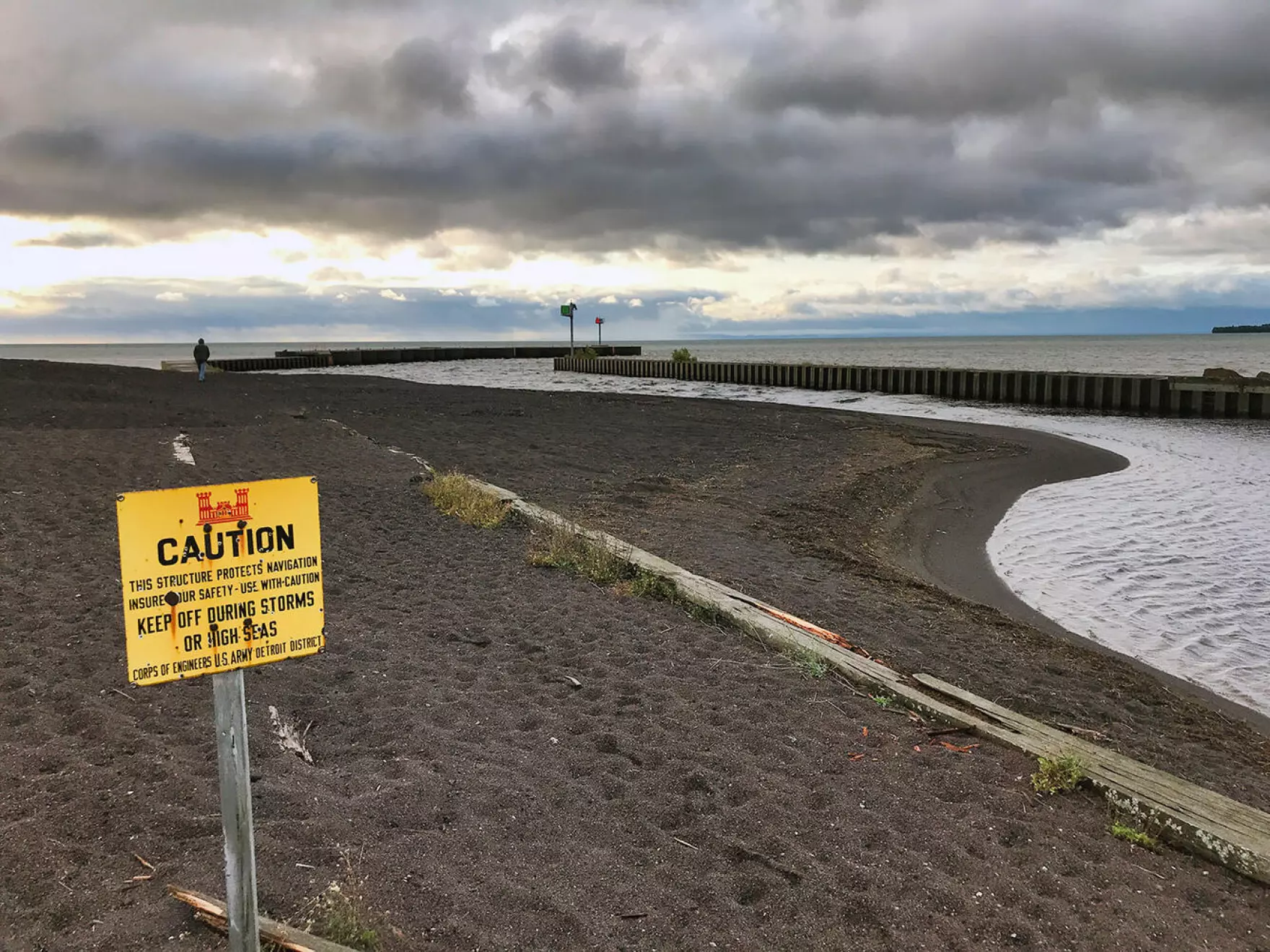
Stamp sands – a kind of mine waste leftover from the early 1900s – cover the beach at Grand Traverse Bay Harbor in Lake Superior. Stamp sands move around, and are currently moving towards the Buffalo Reef, an important spawning ground for trout and lake whitefish. The Michigan Department of Natural Resources estimates that by 2025, 60 percent of viable spawning ground at Buffalo Reef will be covered by stamp sands. Professor Karen Hudson-Edwards says most mining pollution that communities struggle with today comes from historic mines that operated before regulation, not modern mines. (Credit: United States Geological Survey)
The Lake Superior region still bears the scars from a long history of mining: toxic tailings dumps; elevated levels of mercury, arsenic and PCBs in lake sediment. Even if nothing goes wrong at Copperwood, that waste will likely be there forever. Adding another scar to the landscape.
So, Tom Grotewohl, who lives in the cabin down the road from Copperwood, has trouble trusting the company.
GROTEWOHL: You look at these maps– the maps are just mind-bogglingly absurd. It’s like a nightmare mine. If you had to imagine the worst place to put a mine you’d say, “Okay, next door to the largest freshwater sea on Earth … Right next to an old growth park … and then right next to the North Country Trail.” … It’s hard to think up a worse place for a mine than that.
GROTEWOHL: So yes, I spoke up because I live here, because this is my neighborhood, and I care about it. But this is a place that hundreds of thousands of people connect to. And so I think that if anybody was living here, and they heard about what was going on, and they saw the maps, they had the information, they would want to speak up as well.
KATZ: About a year ago, Tom created a group called ProtectThePorkies and started a petition to stop the mine. Over 40,000 people have signed it since then. They agree: the risks are too high. The neighboring Porcupine Mountains are too special. Lake Superior is too important. And they’re hoping a strong, organized opposition will scare off mine investors and rally elected officials against the project.
But the petition is just a symbol. It alone probably won’t stop the mine. Copperwood already has almost all of the necessary environmental permits. And earlier this year, the mine applied for a $50 million dollar grant from the state of Michigan. It was money they needed badly to kickstart the project.
So, the state held meetings to hear how people felt about it.
SPEAKER 1: We have 90 minutes for this portion of the agenda, and please limit your comments to 90 seconds each.
SPEAKER 2: My name is Anahkwet. I’m from the Menominee Indian Reservation. And I’ve been on this land– our people have been on this land for thousands, and thousands, and thousands of years. … I feel like you should deny this $50 million grant. … We can’t choose, you know, money and corporate greed over our own environment, and our plants, and animals. It disturbs me the fact that streams have been rerouted already.
SPEAKER 3: I would hope you would say no to this grant, because it puts at risk the most important economic driver in the western U.P., which is the tourism that the Porkies and Lake Superior support.
SPEAKER 4: Our resort economy relies on tourism. And when there’s no tourist season, there is no business. … We need something to come in and build up our economy.
SPEAKER 5: I own Rick’s Auto, a business out in North Ironwood. I was born and raised here, and I’m in the middle of raising 11 children here. … And I believe we can operate this mine and keep the natural resources we have here. Thank you for your time.
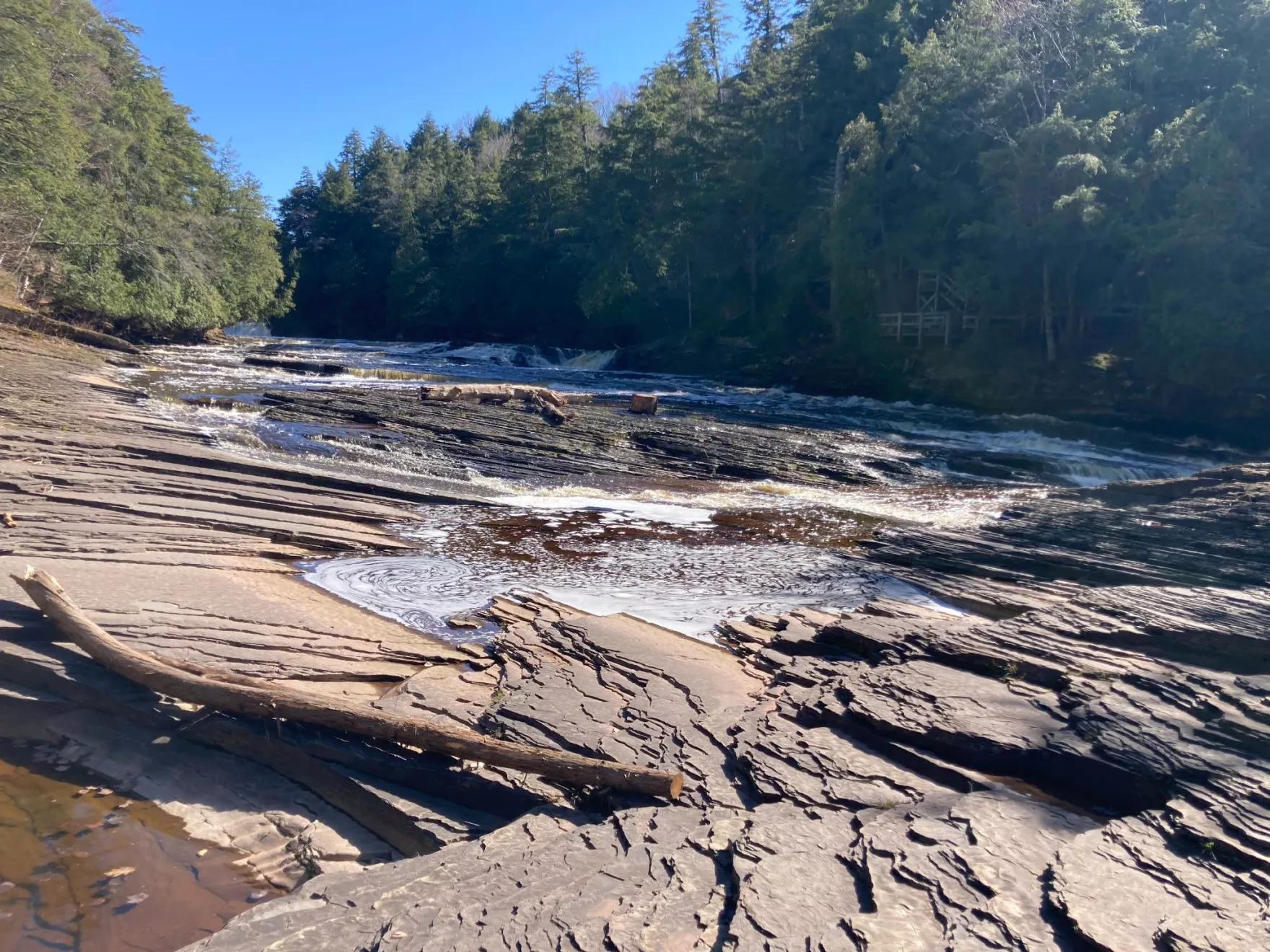
The Presque Isle River flows into Lake Superior near the Copperwood deposit. The current mine access road is a short drive from the Presque Isle Campground in Porcupine Mountains Wilderness State Park. Opponents fear vibrations from rock grinding and lights from the mine site will impact a rustic camping experience. Park officials say the mining company has been accommodating so far, for example, by agreeing to position lights downward to limit light pollution for stargazers. (Credit: Ellie Katz / Points North)
KATZ: Letters of opposition came from nearly two hundred people, many of them western U.P. residents. And also from the Great Lakes Indian Fish and Wildlife Commission, which represents 11 Ojibwe tribes in the region.
Letters of support came from nearly all the local townships, counties and boards, saying it would be a much needed boost to the local economy.
Adam Simon, the University of Michigan professor, supports the creation of new mines like Copperwood, too, but for different reasons.

Tom Grotewohl’s dog looks at Gipsy Creek. The stream flows into Lake Superior; a portion of it requires rerouting to accommodate Copperwood’s tailings dam facility. The mine is permitted by the state to discharge treated wastewater into another nearby creek that flows into Superior. “Any water that comes in contact with the mine is carefully contained,” said Highland Copper CEO Barry O’Shea. “It’s recycled as needed, but [to] the extent that it’s going to be returned to the environment, it goes through an aggressive set of treatments to ensure that it is returned in a similar quality.” Michigan Technological University engineering professor Noel Urban says that water will likely still have some biological impacts. “It doesn’t make the stream a dead stream,” he said. “It just changes what organisms are living there.” (Credit: Ellie Katz / Points North)
SIMON: They’re gonna produce 64 million pounds per year?
KATZ: Yes.
SIMON: Let me do some math on my computer here. 64 million pounds. Okay. So that’s about 30,000 tons of copper per year. Or another way to think about it would be– we go backwards here. That’s about 300,000 battery electric vehicles. So that—
KATZ: Did you say– Sorry, did you say 300,000?
SIMON: 300,000.
KATZ: Wow.
SIMON: Sort of rounding– Yeah. So that copper is important.
KATZ: The state has partially approved the $50 million dollar grant for Copperwood. The Legislature still needs to OK it. Plus, Copperwood only gets the money if they’re able to raise an additional $150 million by December 2025. Highland Copper stands to make a lot of money from this mine or else they wouldn’t go to the trouble – over 10 years and millions of dollars spent getting permits.
And that doesn’t bother Joe Bonovetz, the guy who grew up playing tree tag. On top of being a retired mailman, he’s also a local politician. And he thinks the mine could change the region for the better.

Joe Bonovetz has lived in Gogebic County his whole life – leaving only to serve in the Vietnam War. On top of being a retired mailman, he’s also long been involved in local politics. He is a former city council member and former mayor in Bessemer, in addition to several other positions on county and regional boards. He thinks the Copperwood Mine, and all of the economic possibilities it could bring, would be a lifeline for the region’s struggling economy. (Credit: Ellie Katz / Points North)
BONOVETZ: It’s going to be an opportunity for people my son’s age. … People their age that are working out west … mining at mines, they said they’ll come back here, if there’s a mining job, they’ll come back here. They want to come back here. They want to be able to fish, they want to go on Lake Superior. They want to deer hunt, you know, rabbit hunt, snowmobile– they want to do those things again.
KATZ: But that’s best case scenario if Copperwood moves ahead.
Gary Campbell is a professor of natural resource economics at Michigan Technological University. (And I should note that Michigan Tech’s administration also wrote a letter in support of the grant for Copperwood Mine.)
GARY CAMPBELL: Certainly for a smaller mine like that, that’s not going to operate that many years, it’s not going to have probably that long-term economic impact.
KATZ: The estimated life of Copperwood – the time they’ll actually be actively mining it – is only about 11 years.
CAMPBELL: It’s certainly going to create some jobs, not as many as you might think.
KATZ: He says a lot of mining labor is automated these days or could be outsourced to specialists who come from other mining sites. Gary says it could spur a little auxiliary business, like transportation to and from the mine for workers. Maybe an increase in airport use. But the biggest boost would come from tax revenue.
CAMPBELL: Areas in the U.P. that don’t get much tax revenue, suddenly are getting substantial amounts of money. However, that goes away when the mine closes. … In a depressed area, like that part of the U.P., it’s going to help, but it’s not going to solve the problem.
KATZ: For Tom Grotewohl, though, it all kind of misses the point. He and his partner live off-grid, and he says it’s the happiest he’s ever been. And he thinks more renewable energy and clean technology — they’re just Band-Aids we’re slapping on a bigger problem.
GROTEWOHL: And that problem arose from extraction of fossil fuels and then all of the machinery which runs on fossil fuels. We want to replace that problem with another problem: extraction of minerals and new machinery that requires those minerals. So the playbook is actually not changing at all. We’re just going from extraction and machinery, to extraction and machinery, and pretending like something fundamental has changed.
KATZ: Joe Bonovetz, from Bessemer, he also sees the mine as a Band-Aid. But for him, that’s not necessarily a bad thing. Because without it, he worries, the place he calls home would bleed out.
BONOVETZ: I really don’t think of this as a potential environmental disaster. Certainly, you know, disasters have happened, and they’ll happen again, but they don’t happen every time. … This is a survival story, not a success story. We need this to survive.
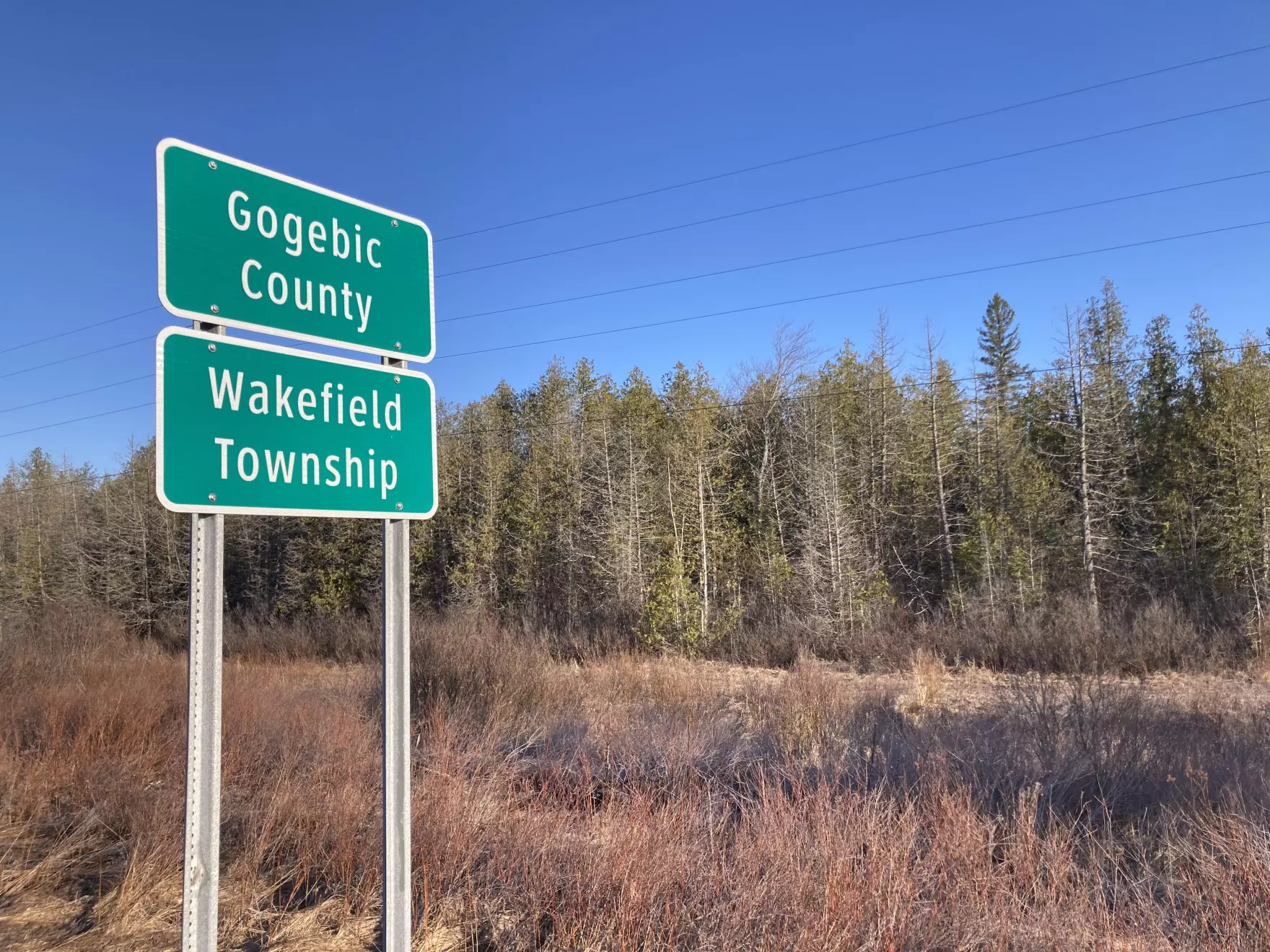
The Copperwood Mine is in Gogebic County – the westernmost county in Michigan. Northern Minnesota and Wisconsin have also seen renewed interest in copper mining. The metal’s fundamental role in renewable energy infrastructure, including the electric grid and electric vehicle batteries, is surging demand. Adam Simon, a University of Michigan professor, says there is a big gap between the amount of copper currently produced in the world and the amount of copper needed for a global transition to clean energy. (Credit: Ellie Katz / Points North)
Catch more news at Great Lakes Now:
Points North: To catch an arsonist
Points North: A Struggle for Justice
Featured image: The view of Lake Superior’s shoreline at Porcupine Mountains Wilderness State Park in Michigan’s Upper Peninsula. A new copper mine near the lakeshore and the state park is stirring controversy. (Credit: David Kenyon / Michigan Department of Natural Resources)


